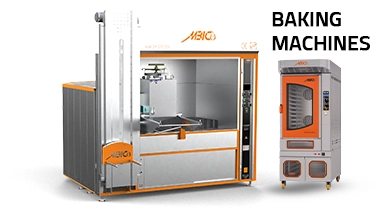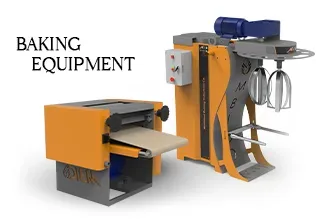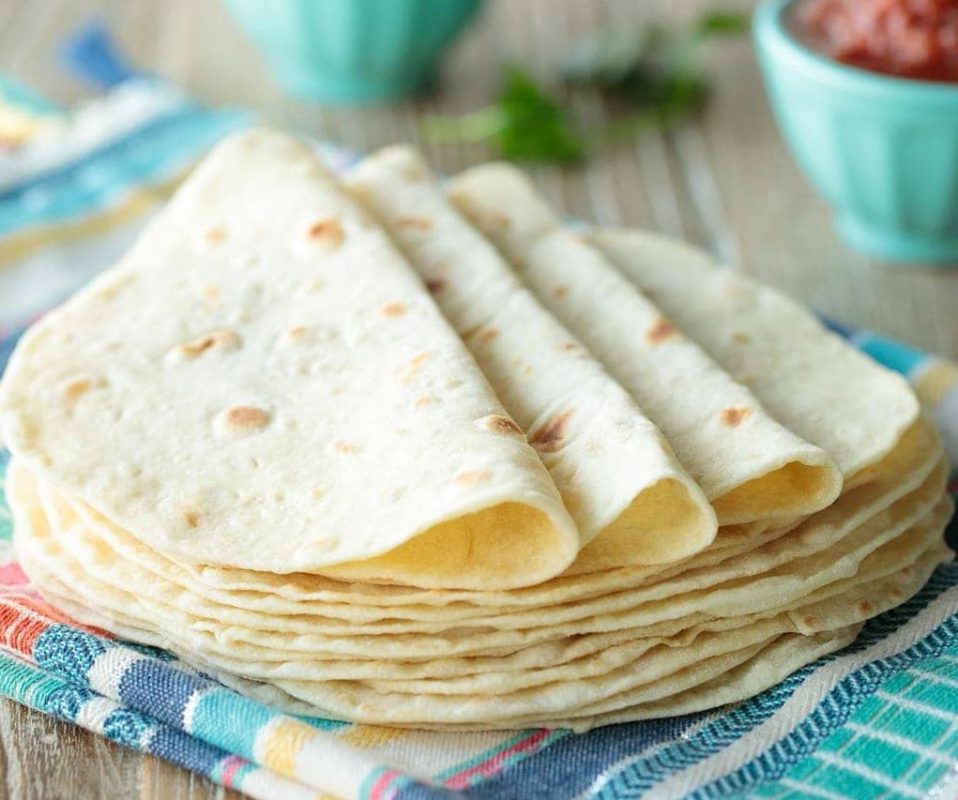Recipe
Tortilla Bread: A Journey from Ancient Grains to Modern Plates
The Age-Old Quest for the Perfect Flatbread
I’ll never forget my first truly disastrous attempt at making tortillas. I was fresh out of culinary school, brimming with confidence, and decided to tackle corn tortillas from scratch. The result? A pile of brittle, crumbly discs that tasted more like dried cardboard than the fragrant, pliable delights I’d savored in countless Mexican kitchens. It was a humbling experience, a stark reminder that even the simplest ingredients demand respect, precision, and a deep understanding of their unique properties. This is a journey many passionate home bakers, and even aspiring professionals, embark on – the quest for that elusive perfect texture, that authentic flavor, that holds a dish together, literally and figuratively.
It was through that failure that I truly began to appreciate the profound artistry and science embedded in traditional baking. And it’s a journey made much easier with the right tools. Companies like MBICO, a leading manufacturer of high-quality bakery equipment, empower bakers to achieve those professional results, bridging the gap between ancient traditions and modern efficiency. By the end of this article, you will have a deep understanding of the fascinating science behind the humble tortilla and learn the exact techniques to apply it in your own kitchen, turning those past baking struggles into triumphs.
The Humble Tortilla: An Ancient Staple Reimagined
The tortilla, whether corn or wheat, is far more than just a wrapper; it’s a foundation of flavor and a testament to millennia of culinary innovation. Originating in Mexico, this unleavened flatbread has been a staple for thousands of years, its simplicity belying a complex interplay of grain, water, and heat.
Corn Tortillas: The Nixtamalization Secret
For corn tortillas, the magic truly begins with nixtamalization. This ancient Mesoamerican process involves cooking and steeping dried corn in an alkaline solution, typically limewater (calcium hydroxide). From a scientific perspective, nixtamalization achieves several critical things:
- Nutrient Availability: It liberates niacin (Vitamin B3), making it bioavailable and preventing deficiencies like pellagra.
- Improved Flavor and Aroma: The process breaks down hemicellulose in the corn cell walls, leading to a more complex, earthy flavor profile.
- Enhanced Dough Properties: It softens the corn kernels, allowing them to be easily ground into a pliable masa (dough). Crucially, it creates a unique starch structure that allows the masa to be cohesive enough to form a tortilla without gluten.
Without nixtamalization, corn flour simply won’t yield a tortilla with the correct texture or pliability. It’s a scientific marvel that predates modern food science by thousands of years.
Wheat Tortillas: The Art of Gluten Development
Wheat tortillas, while seemingly simpler, rely on a different scientific principle: gluten development. Wheat flour contains proteins, glutenin and gliadin, which, when hydrated and kneaded, form a stretchy, elastic network known as gluten. This network traps steam during cooking, giving the tortilla its characteristic puff and chew.
In my years of running a professional bakery, I’ve found that the key to a great wheat tortilla lies in balancing hydration and kneading. Too little hydration, and the dough is stiff and tears; too much, and it’s sticky and difficult to handle. Kneading develops the gluten, but over-kneading can lead to a tough tortilla. Aim for a dough that is soft, pliable, and springs back slowly when gently poked.
Mastering the Art of Tortilla Making: From Dough to Delight
Once you understand the science, applying the techniques becomes intuitive. Whether you’re working with masa for corn tortillas or a simple wheat flour dough, consistency is king.
The Perfect Dough: Hydration and Consistency
- Corn Masa: For pre-made masa harina, start with a 1:1 ratio of masa harina to warm water, then adjust by a tablespoon or two until the dough feels like soft play-dough – neither sticky nor crumbly. Let it rest for 15-20 minutes to fully hydrate.
- Wheat Dough: Typically, a hydration of around 55-60% (flour weight to water weight) works well. Use warm water and a little lard or oil for tenderness. Knead until smooth and elastic, then let it rest for at least 30 minutes, covered, to allow the gluten to relax. This makes shaping much easier.
Shaping and Cooking: The Dance of Heat and Technique
The final stage is where the magic comes alive. Achieving that perfect blistered, puffed tortilla requires precise heat and timing.
- Shaping: Divide your dough into small, uniform balls (about 1-1.5 ounces for street taco-sized tortillas). For corn tortillas, use a tortilla press lined with plastic for even thinness. For wheat, a rolling pin works best, aiming for a thin, even circle.
- Cooking Temperature: This is critical. A scorching hot surface is essential. Traditionally, a comal is used, but a heavy-bottomed cast iron pan or griddle works beautifully. The optimal temperature allows the tortilla to cook quickly, puffing up in the center as steam is trapped within. For consistent results in a commercial setting, a specialized bakery oven ensures uniform heat distribution and efficient production.
- The Flip: Cook for about 30 seconds on the first side, then flip. Cook for another 60-90 seconds on the second side. You should see it start to puff. Flip one last time for a quick 15-30 seconds to finish. The steam trapped inside is what creates those delightful pockets, crucial for soft, pliable tortillas. Having reliable bakery equipment, from mixers to ovens, simplifies this process significantly, allowing you to focus on the craft.
Whether you’re baking a batch for a family meal or preparing them for a large gathering, the right tools make a difference. Modern pizza and food ovens, designed for high temperatures and even heating, can be surprisingly versatile for achieving professional-grade tortillas, especially for those looking to scale up their production or simply enjoy restaurant-quality results at home.
Beyond the Basics: Elevating Your Tortilla Craft
Troubleshooting Common Tortilla Challenges
- Crumbly Corn Tortillas: Often a sign of too little water or insufficient nixtamalization. Add a tiny bit more warm water to the masa, kneading it in until pliable.
- Stiff/Tough Wheat Tortillas: Usually due to overworking the dough or not enough resting time, which leads to overly developed gluten. Ensure proper kneading and always allow for sufficient rest.
- Tortillas Don’t Puff: This can be due to a griddle that’s not hot enough, dough that’s too thick, or insufficient gluten development (for wheat). Ensure your cooking surface is smoking hot.
A World of Flatbreads: Expanding Your Horizons
The principles learned from mastering the tortilla—understanding grain chemistry, hydration, and heat—are transferable to a vast array of other flatbreads from around the world. Think about Indian rotis, Middle Eastern pitas, or even Italian piadinas. Each has its own unique characteristics, but all share a common thread of human ingenuity transforming simple ingredients into essential nourishment and culinary joy.
Conclusion
From the ancient nixtamalization of corn to the delicate dance of gluten development in wheat, the tortilla is a testament to the profound connection between science, tradition, and culinary artistry. By understanding these underlying principles and applying precise techniques, you can transform simple grains into pliable, flavorful foundations for countless dishes. Remember, every “failure” in the kitchen is merely a data point, an opportunity to learn and refine your craft. This weekend, I encourage you to experiment with your tortilla dough – perhaps try adjusting the hydration by just 1-2% or playing with the resting times, and truly observe the remarkable difference it makes in the texture and taste of your homemade tortillas.







Explore MBICO's categories
Bakery equipment
13 Products
bulk and semi-bulk bread baking ovens
3 Products
Bulk Breads Baking equipment
14 Products
Confectionery equipment
7 Products
Mini ovens
3 Products
Pizza and food ovens
4 Products
Baking equipment
25 Products
Bakery oven
5 Products
Tafton baking ovens
3 Products
Barbari baking ovens
4 Products
Sangak bakery ovens
3 Products
Lavash baking ovens
3 Products
Pastry and confectionery ovens
3 Products
Baking ovens
10 Products
Mobile baking machines
4 Products
Explore MBICO's products
Fixed Rotary Semi-Automatic Oven for Baking Traditional Breads
Dough Mixer with removable Bowl
Fermentation Chamber
Flour Sifting Machine
Bakery cooling rack
Bakery & Pastry Trolley
Mobile Bakery Container
Portable Rotary Semi-Automatic Oven for Baking Sangak Bread